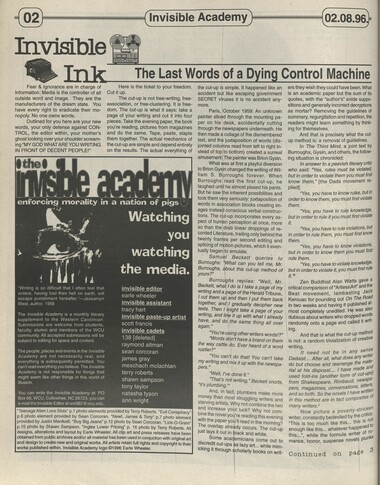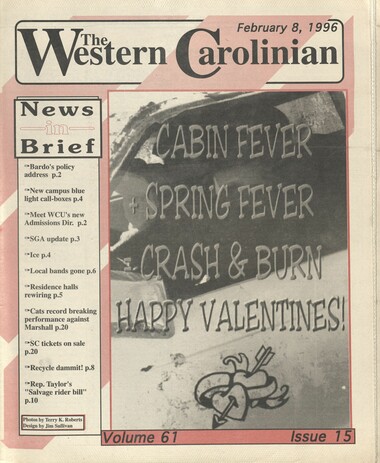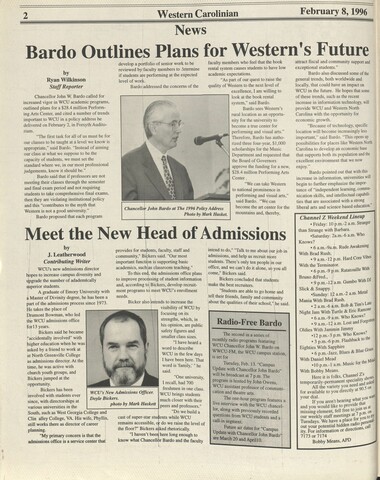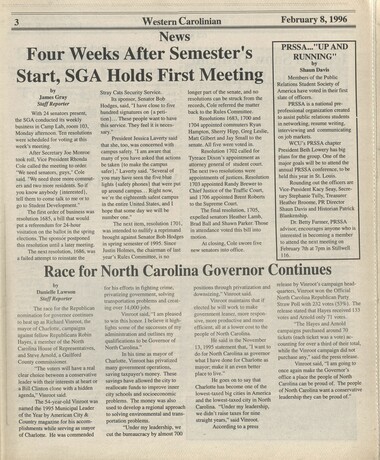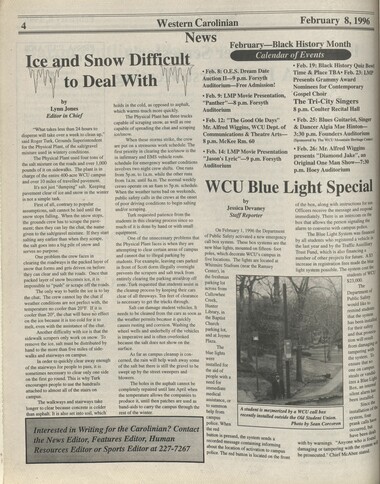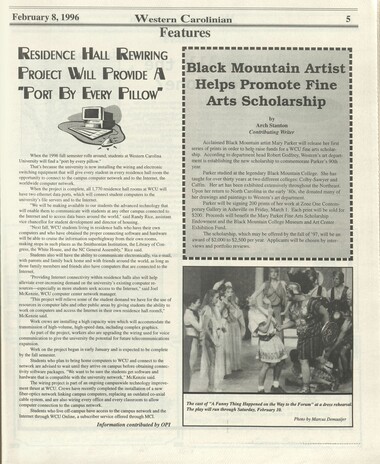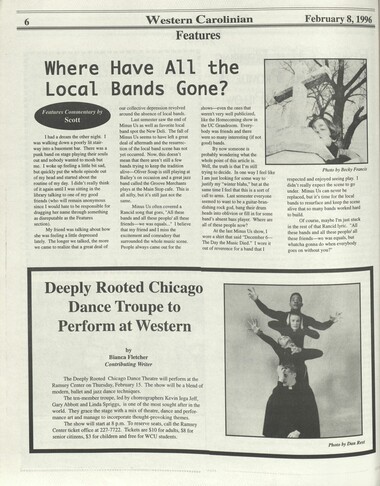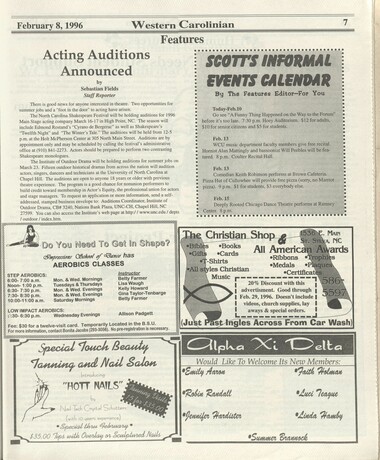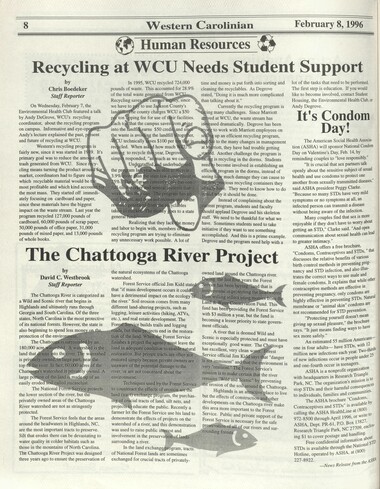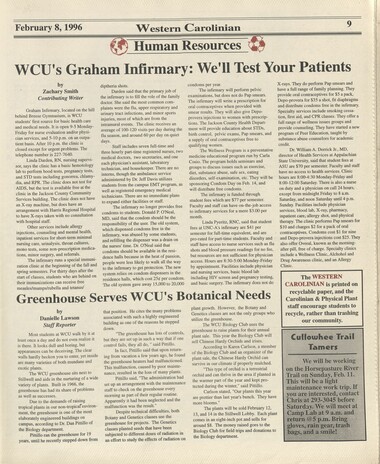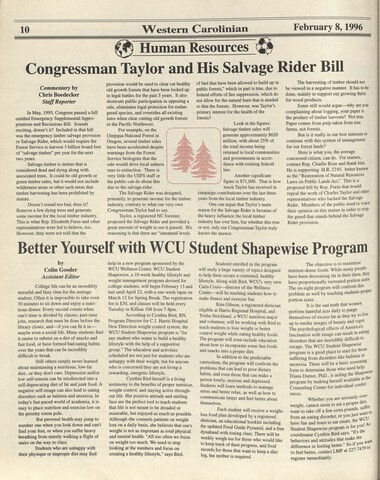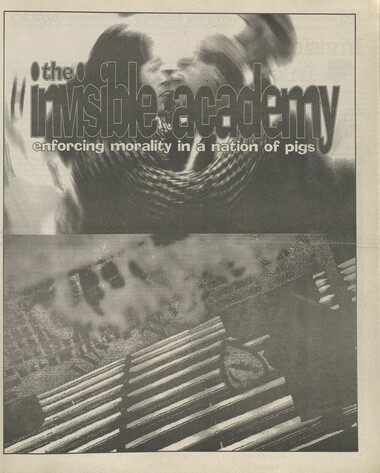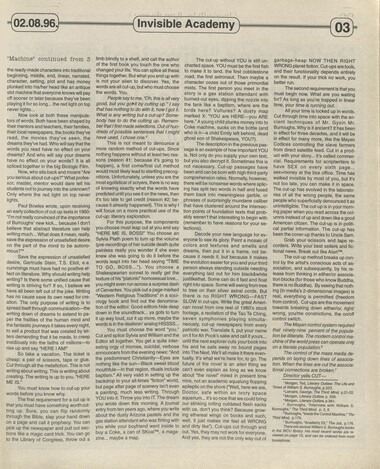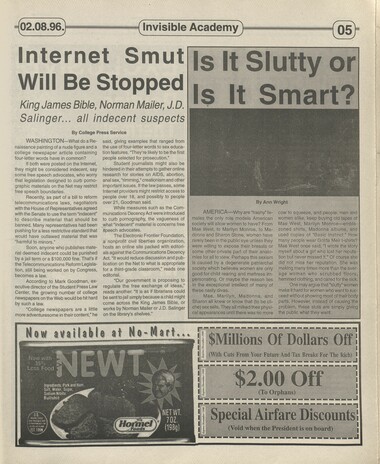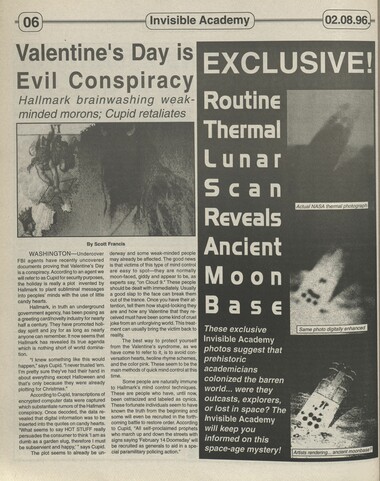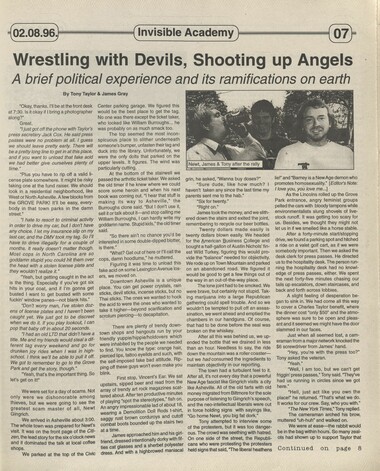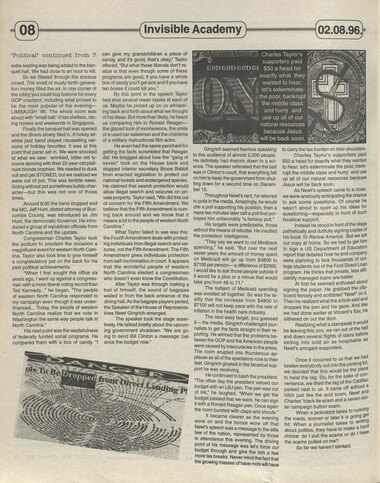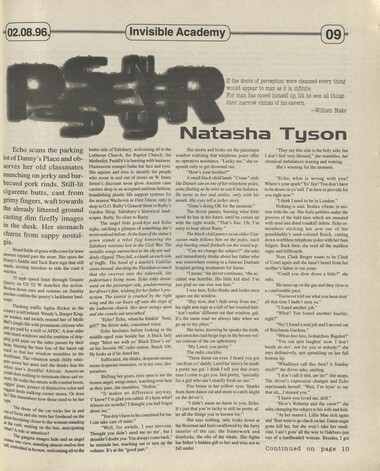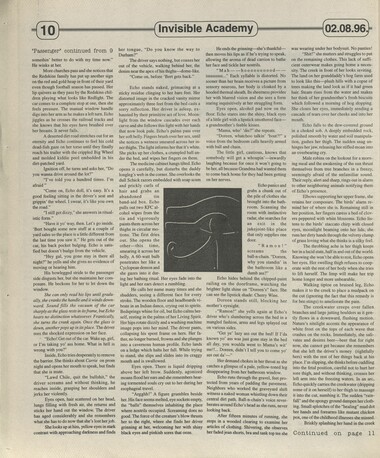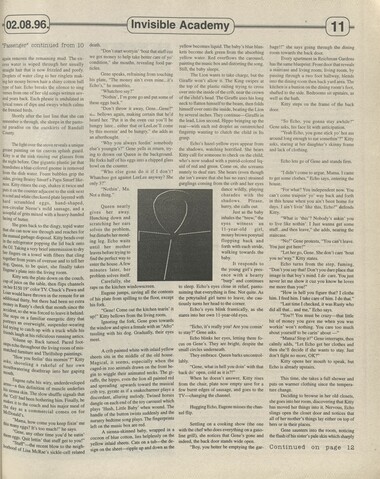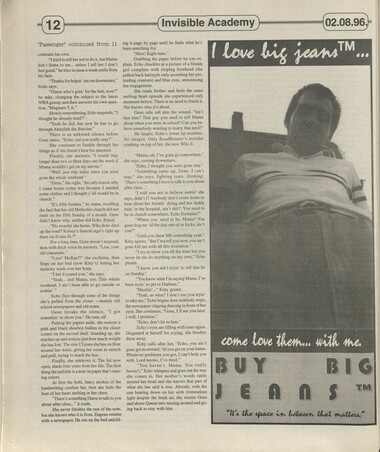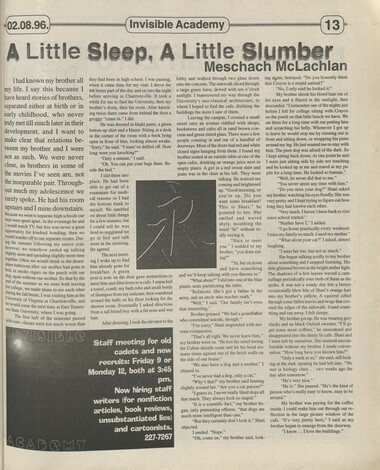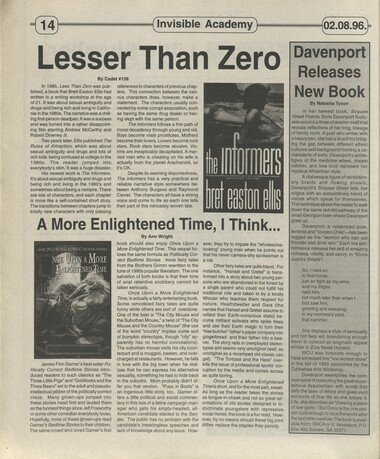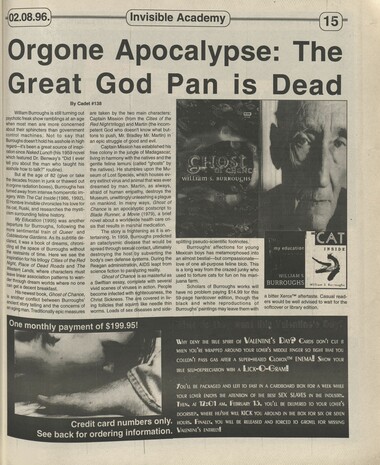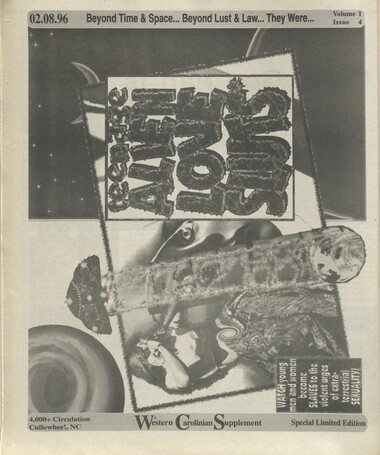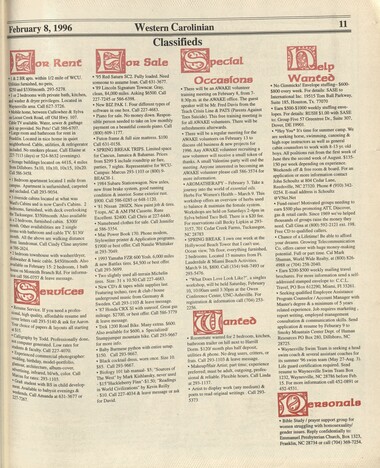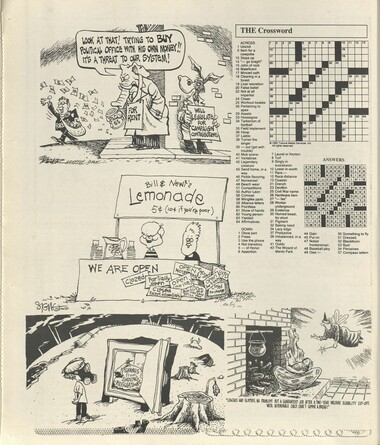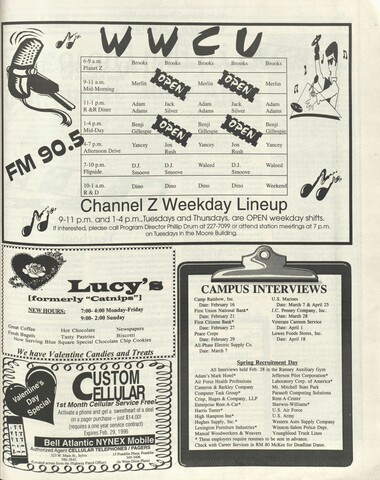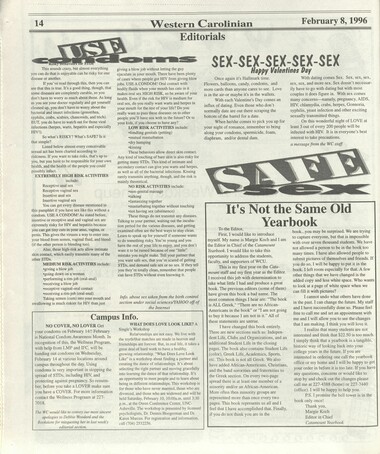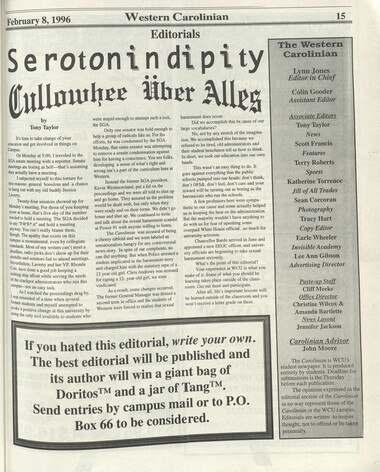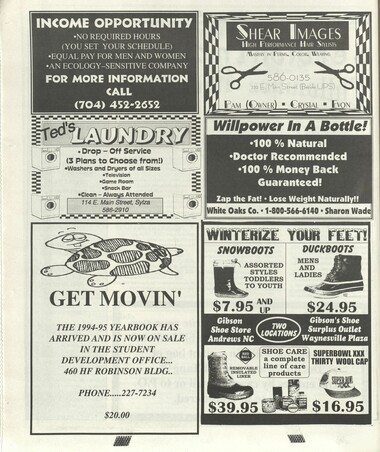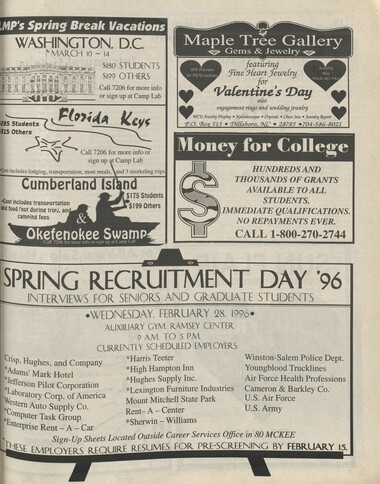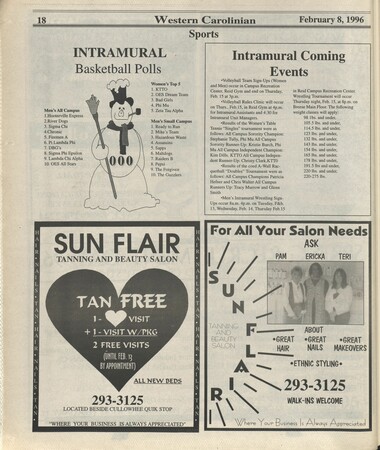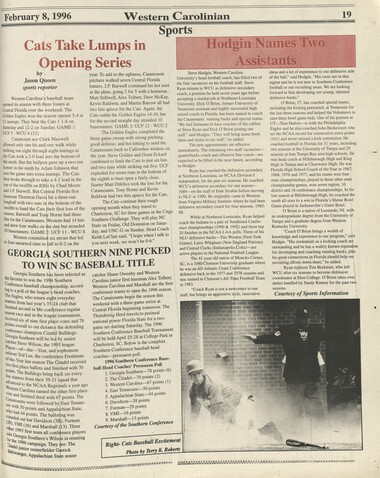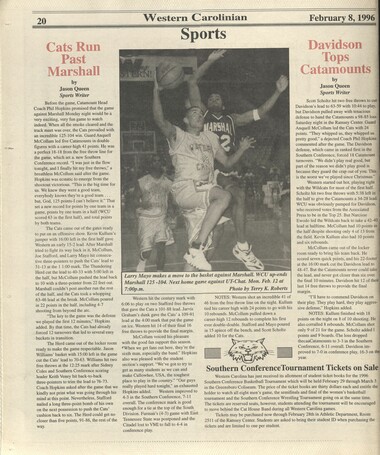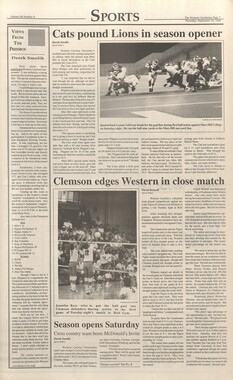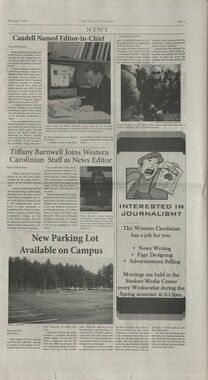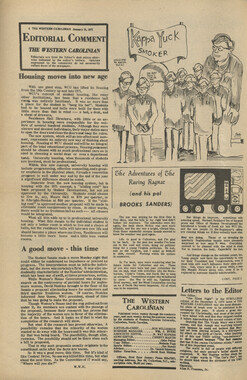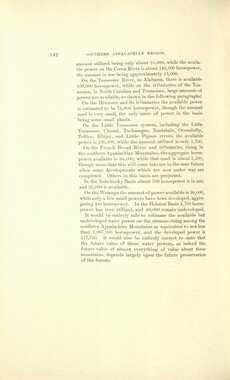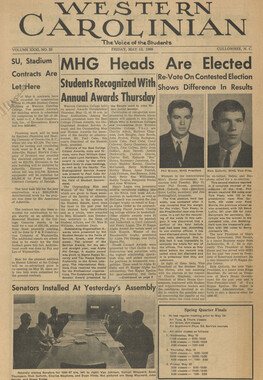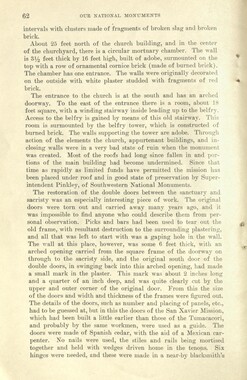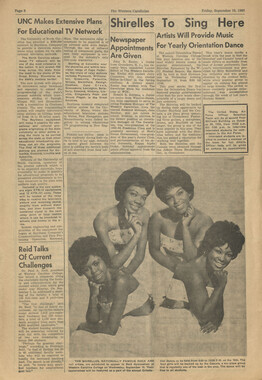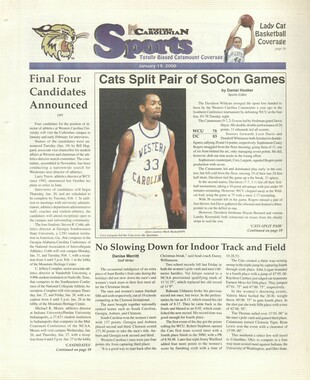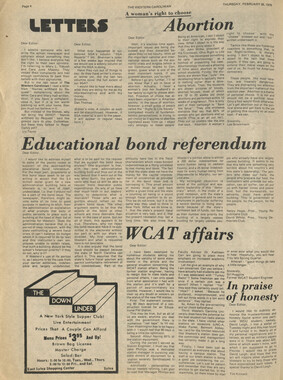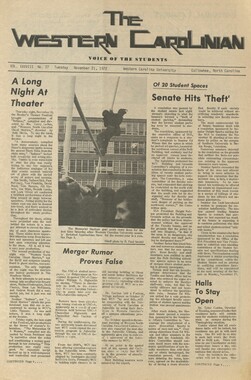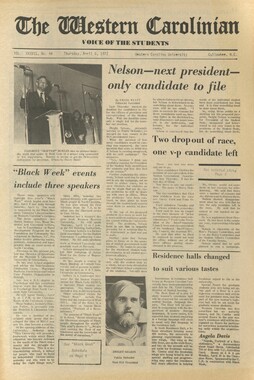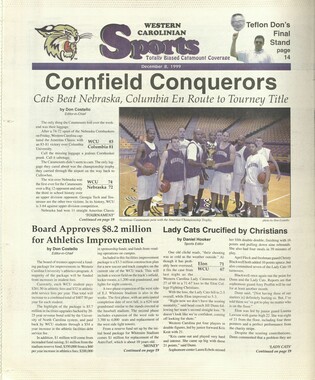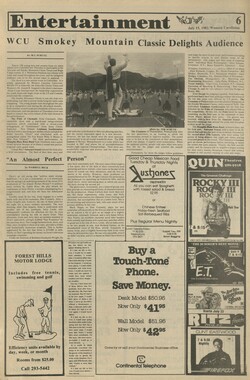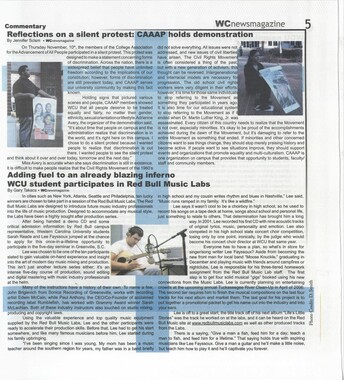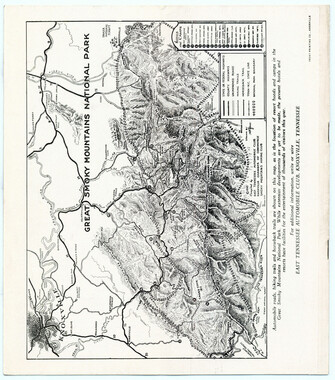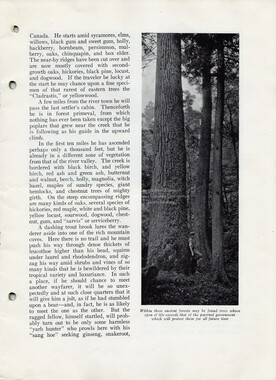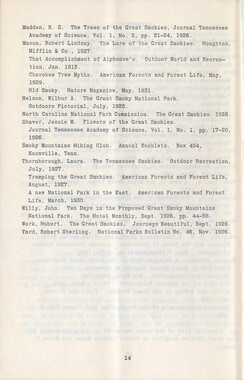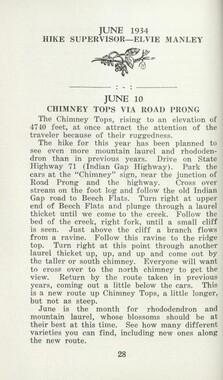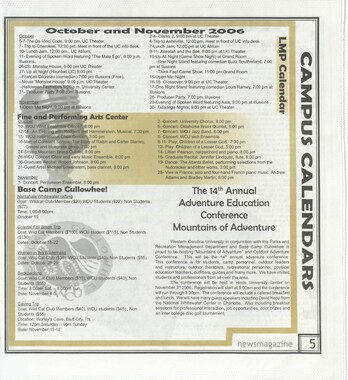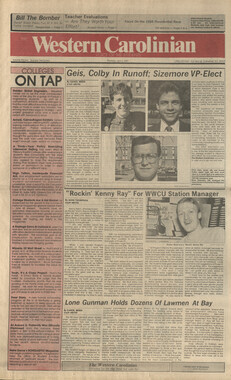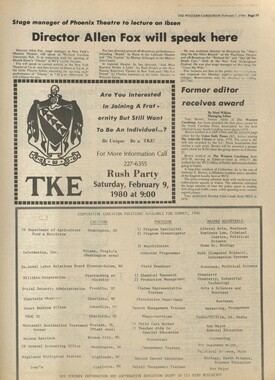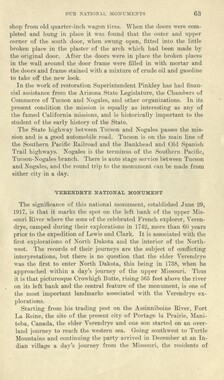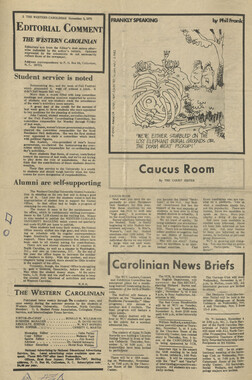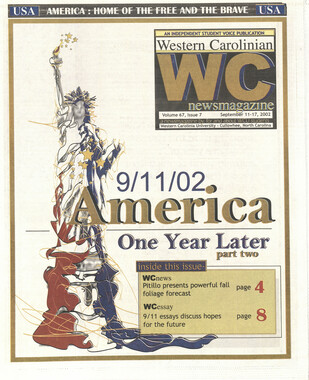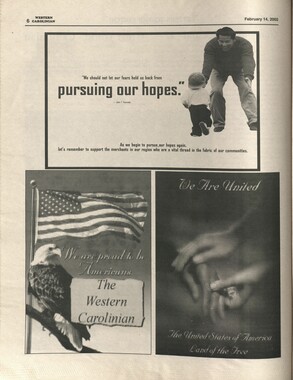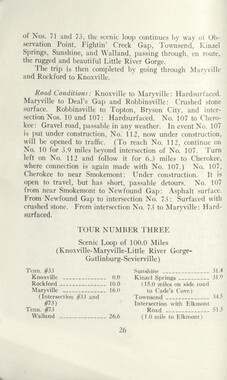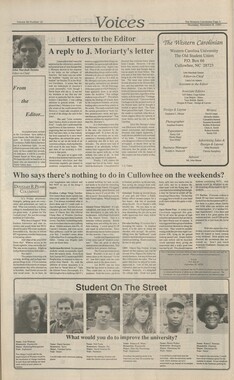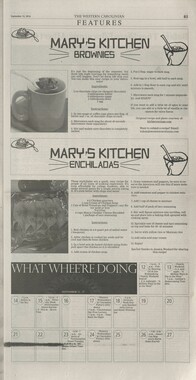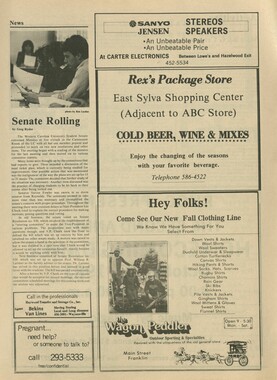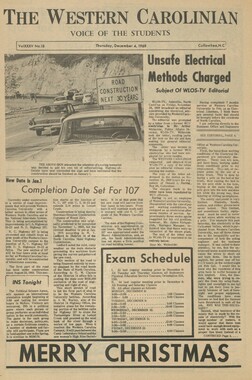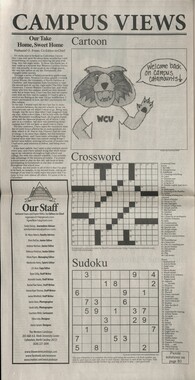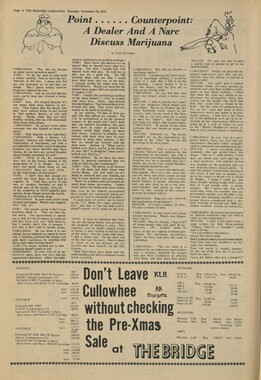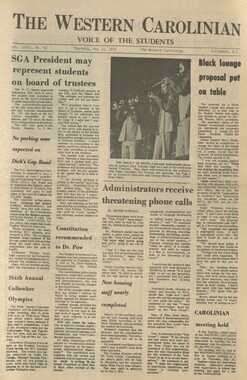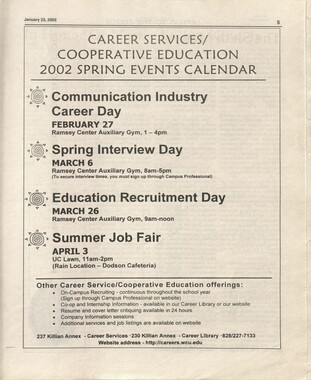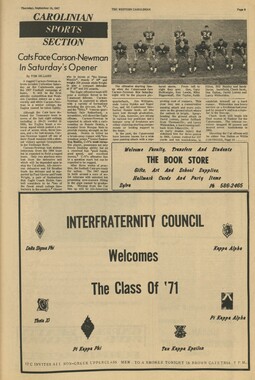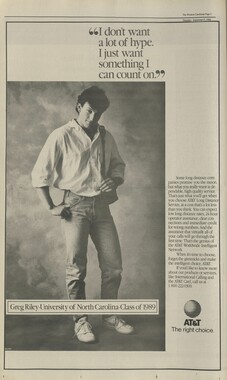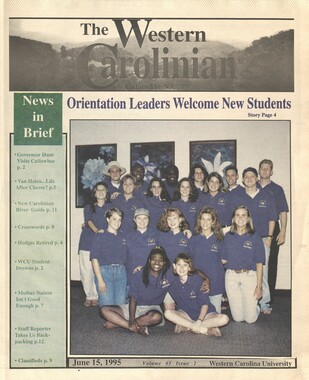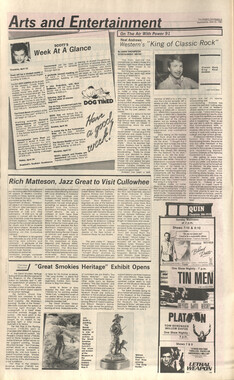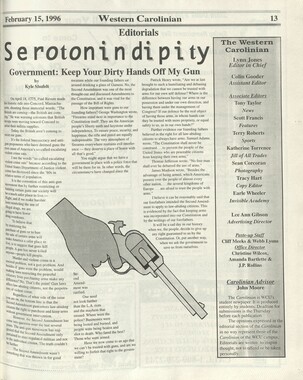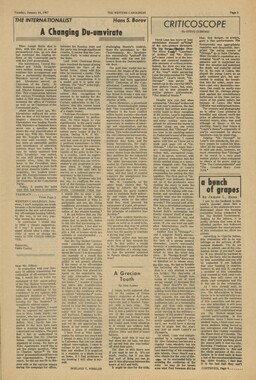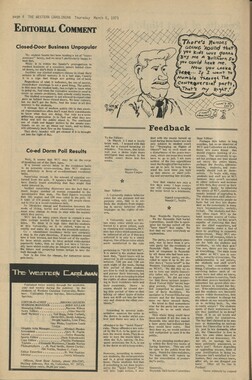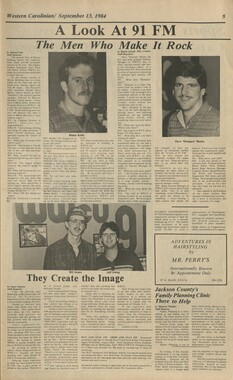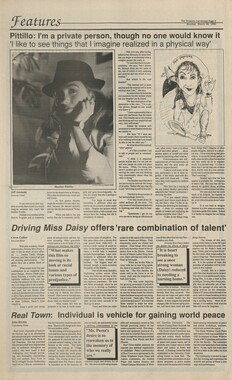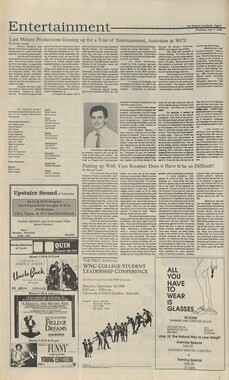Western Carolina University (21)
View all
- Canton Champion Fibre Company (2308)
- Cherokee Traditions (291)
- Civil War in Southern Appalachia (165)
- Craft Revival (1942)
- George Masa Collection (137)
- Great Smoky Mountains - A Park for America (3080)
- Highlights from Western Carolina University (422)
- Horace Kephart (973)
- Journeys Through Jackson (159)
- LGBTQIA+ Archive of Jackson County (89)
- Oral Histories of Western North Carolina (318)
- Picturing Appalachia (6617)
- Stories of Mountain Folk (413)
- Travel Western North Carolina (153)
- Western Carolina University Fine Art Museum Vitreograph Collection (129)
- Western Carolina University Herbarium (92)
- Western Carolina University: Making Memories (738)
- Western Carolina University Publications (2491)
- Western Carolina University Restricted Electronic Theses and Dissertations (146)
- Western North Carolina Regional Maps (71)
- World War II in Southern Appalachia (131)
University of North Carolina Asheville (6)
View all
- Allanstand Cottage Industries (62)
- Appalachian National Park Association (53)
- Bennett, Kelly, 1890-1974 (1463)
- Berry, Walter (76)
- Brasstown Carvers (40)
- Carver, George Washington, 1864?-1943 (26)
- Cathey, Joseph, 1803-1874 (1)
- Champion Fibre Company (233)
- Champion Paper and Fibre Company (297)
- Cherokee Indian Fair Association (16)
- Cherokee Language Program (22)
- Crowe, Amanda (40)
- Edmonston, Thomas Benton, 1842-1907 (7)
- Ensley, A. L. (Abraham Lincoln), 1865-1948 (275)
- Fromer, Irving Rhodes, 1913-1994 (70)
- George Butz (BFS 1907) (46)
- Goodrich, Frances Louisa (120)
- Grant, George Alexander, 1891-1964 (96)
- Heard, Marian Gladys (60)
- Kephart, Calvin, 1883-1969 (15)
- Kephart, Horace, 1862-1931 (313)
- Kephart, Laura, 1862-1954 (67)
- Laney, Gideon Thomas, 1889-1976 (439)
- Masa, George, 1881-1933 (61)
- McElhinney, William Julian, 1896-1953 (44)
- Niggli, Josephina, 1910-1983 (10)
- North Carolina Park Commission (105)
- Osborne, Kezia Stradley (9)
- Owens, Samuel Robert, 1918-1995 (11)
- Penland Weavers and Potters (36)
- Roberts, Vivienne (15)
- Roth, Albert, 1890-1974 (142)
- Schenck, Carl Alwin, 1868-1955 (1)
- Sherrill's Photography Studio (2565)
- Southern Highland Handicraft Guild (127)
- Southern Highlanders, Inc. (71)
- Stalcup, Jesse Bryson (46)
- Stearns, I. K. (213)
- Thompson, James Edward, 1880-1976 (226)
- United States. Indian Arts and Crafts Board (130)
- USFS (683)
- Vance, Zebulon Baird, 1830-1894 (1)
- Weaver, Zebulon, 1872-1948 (58)
- Western Carolina College (230)
- Western Carolina Teachers College (282)
- Western Carolina University (2008)
- Western Carolina University. Mountain Heritage Center (18)
- Whitman, Walt, 1819-1892 (10)
- Wilburn, Hiram Coleman, 1880-1967 (73)
- Williams, Isadora (3)
- Cain, Doreyl Ammons (0)
- Crittenden, Lorraine (0)
- Rhodes, Judy (0)
- Smith, Edward Clark (0)
- Appalachian Region, Southern (3032)
- Asheville (N.C.) (1945)
- Avery County (N.C.) (26)
- Blount County (Tenn.) (195)
- Buncombe County (N.C.) (1680)
- Cherokee County (N.C.) (283)
- Clay County (N.C.) (556)
- Graham County (N.C.) (238)
- Great Smoky Mountains National Park (N.C. and Tenn.) (525)
- Haywood County (N.C.) (3573)
- Henderson County (N.C.) (70)
- Jackson County (N.C.) (4925)
- Knox County (Tenn.) (35)
- Knoxville (Tenn.) (13)
- Lake Santeetlah (N.C.) (10)
- Macon County (N.C.) (421)
- Madison County (N.C.) (216)
- McDowell County (N.C.) (39)
- Mitchell County (N.C.) (135)
- Polk County (N.C.) (35)
- Qualla Boundary (982)
- Rutherford County (N.C.) (78)
- Swain County (N.C.) (2185)
- Transylvania County (N.C.) (270)
- Watauga County (N.C.) (12)
- Waynesville (N.C.) (86)
- Yancey County (N.C.) (72)
- Aerial Photographs (3)
- Aerial Views (60)
- Albums (books) (4)
- Articles (1)
- Artifacts (object Genre) (228)
- Bibliographies (1)
- Biography (general Genre) (2)
- Cards (information Artifacts) (38)
- Clippings (information Artifacts) (192)
- Copybooks (instructional Materials) (3)
- Crafts (art Genres) (622)
- Depictions (visual Works) (21)
- Design Drawings (1)
- Digital Moving Image Formats (2)
- Drawings (visual Works) (185)
- Envelopes (101)
- Exhibitions (events) (1)
- Facsimiles (reproductions) (1)
- Fiction (general Genre) (4)
- Financial Records (12)
- Fliers (printed Matter) (67)
- Glass Plate Negatives (381)
- Guidebooks (2)
- Internegatives (10)
- Interviews (823)
- Land Surveys (102)
- Letters (correspondence) (1045)
- Manuscripts (documents) (618)
- Maps (documents) (177)
- Memorandums (25)
- Minutes (administrative Records) (59)
- Negatives (photographs) (6090)
- Newsletters (1290)
- Newspapers (2)
- Notebooks (8)
- Occupation Currency (1)
- Paintings (visual Works) (1)
- Pen And Ink Drawings (1)
- Periodicals (194)
- Personal Narratives (10)
- Photographs (12977)
- Plans (maps) (1)
- Poetry (6)
- Portraits (4568)
- Postcards (329)
- Programs (documents) (181)
- Publications (documents) (2444)
- Questionnaires (65)
- Relief Prints (26)
- Sayings (literary Genre) (1)
- Scrapbooks (282)
- Sheet Music (2)
- Slides (photographs) (402)
- Songs (musical Compositions) (2)
- Sound Recordings (802)
- Specimens (92)
- Speeches (documents) (18)
- Tintypes (photographs) (8)
- Transcripts (329)
- Text Messages (0)
- A.L. Ensley Collection (275)
- Appalachian Industrial School Records (7)
- Appalachian National Park Association Records (336)
- Axley-Meroney Collection (2)
- Bayard Wootten Photograph Collection (20)
- Bethel Rural Community Organization Collection (7)
- Blumer Collection (5)
- C.W. Slagle Collection (20)
- Canton Area Historical Museum (2110)
- Carlos C. Campbell Collection (462)
- Cataloochee History Project (64)
- Cherokee Studies Collection (4)
- Daisy Dame Photograph Album (5)
- Daniel Boone VI Collection (1)
- Doris Ulmann Photograph Collection (112)
- Elizabeth H. Lasley Collection (1)
- Elizabeth Woolworth Szold Fleharty Collection (4)
- Frank Fry Collection (95)
- George Masa Collection (173)
- Gideon Laney Collection (452)
- Hazel Scarborough Collection (2)
- Hiram C. Wilburn Papers (28)
- Historic Photographs Collection (236)
- Horace Kephart Collection (861)
- Humbard Collection (33)
- Hunter and Weaver Families Collection (1)
- I. D. Blumenthal Collection (4)
- Isadora Williams Collection (4)
- Jesse Bryson Stalcup Collection (47)
- Jim Thompson Collection (224)
- John B. Battle Collection (7)
- John C. Campbell Folk School Records (80)
- John Parris Collection (6)
- Judaculla Rock project (2)
- Kelly Bennett Collection (1482)
- Love Family Papers (11)
- Major Wiley Parris Civil War Letters (3)
- Map Collection (12)
- McFee-Misemer Civil War Letters (34)
- Mountain Heritage Center Collection (4)
- Norburn - Robertson - Thomson Families Collection (44)
- Pauline Hood Collection (7)
- Pre-Guild Collection (2)
- Qualla Arts and Crafts Mutual Collection (12)
- R.A. Romanes Collection (681)
- Rosser H. Taylor Collection (1)
- Samuel Robert Owens Collection (94)
- Sara Madison Collection (144)
- Sherrill Studio Photo Collection (2558)
- Smoky Mountains Hiking Club Collection (616)
- Stories of Mountain Folk - Radio Programs (374)
- The Reporter, Western Carolina University (510)
- Venoy and Elizabeth Reed Collection (16)
- WCU Gender and Sexuality Oral History Project (36)
- WCU Mountain Heritage Center Oral Histories (25)
- WCU Oral History Collection - Mountain People, Mountain Lives (71)
- WCU Students Newspapers Collection (1923)
- Western North Carolina Tomorrow Black Oral History Project (69)
- William Williams Stringfield Collection (2)
- Zebulon Weaver Collection (109)
- African Americans (390)
- Appalachian Trail (35)
- Artisans (521)
- Cherokee art (84)
- Cherokee artists -- North Carolina (10)
- Cherokee language (21)
- Cherokee pottery (101)
- Cherokee women (208)
- Church buildings (190)
- Civilian Conservation Corps (U.S.) (111)
- College student newspapers and periodicals (2012)
- Dams (108)
- Dance (1023)
- Education (222)
- Floods (63)
- Folk music (1015)
- Forced removal, 1813-1903 (2)
- Forest conservation (220)
- Forests and forestry (1198)
- Gender nonconformity (4)
- Great Smoky Mountains National Park (N.C. and Tenn.) (181)
- Hunting (47)
- Landscape photography (25)
- Logging (122)
- Maps (83)
- Mines and mineral resources (9)
- North Carolina -- Maps (18)
- Paper industry (38)
- Postcards (255)
- Pottery (135)
- Railroad trains (72)
- Rural electrification -- North Carolina, Western (3)
- School integration -- Southern States (2)
- Segregation -- North Carolina, Western (5)
- Slavery (5)
- Sports (452)
- Storytelling (243)
- Waterfalls -- Great Smoky Mountains (N.C. and Tenn.) (66)
- Weaving -- Appalachian Region, Southern (280)
- Wood-carving -- Appalachian Region, Southern (328)
- World War, 1939-1945 (173)
Western Carolinian Volume 61 Number 15
Item
Item’s are ‘child’ level descriptions to ‘parent’ objects, (e.g. one page of a whole book).
-
-
02 Invisible Academy 02.08.96. Invisible /'2 V » • T~n fc The Last Words of a Dying Control Machine Fear & Ignorance are in charge of Information. Media is the controller of all outside word and image. They are the manufacturers of the dream state. You have every right to eradicate their monopoly. No one owns words. Outlined for you here are your new words, your only defense against CONTROL, the editor within, your mother's ghost looking over your shoulder screaming "MY GOD WHAT ARE YOU WRITING IN FRONT OF DECENT PEOPLE!" Here is the ticket to your freedom. Cut it up. The cut-up is not free-writing, free- association, or free-clustering. It is freedom. The cut-up is what it says: take a page of your writing and cut it into four pieces. Take the evening paper, the book you're reading, pictures from magazines and do the same. Tape, paste, staple them together. The actual mechanics of the cut-up are simple and depend entirely on the results. The actual everything of enforcing morality in a nation of pigs Watching you watching the media. invisible editor earle wheeler invisible assistant tracy hart invisible paste-up artist scott francis invisible cadets 138 [deleted] raymond altman sean corcoran james gray meschach mclachlan terry roberts shawn sampson tony taylor natasha tyson ann wright "Writing is so difficult that I often feel that writers, having had their hell on earth, will escape punishment hereafter."—Jessamyn West, author, 1956 The Invisible Academy is a monthly literary supplement to the Western Carolinian. Submissions are welcome from students, faculty, alumni and members of the WCU community. All accepted submissions will be subject to editing for space and content. The people, places and events in the Invisible Academy are not necessarily real, and everything is subsequently permitted. You can't read everything you believe. The Invisible Academy is not responsible for things that might seem like other things in this world of Illusion. You can write the Invisible Academy at: PO Box 66, WCU, Cullowhee, NC 28723; you can e-mail the Invisible Editor at ww982 @ wcu.edu. Teenage Alien Love Sluts" p.1 photo elements provided by Terry Roberts. "Evil Conspiracy' p.6 photo element provided by Sean Corcoran. "Newt, James & Tony" p.7 photo element provided by Justin Menikelli. "Buy Big Jeans" p. 12 photo by Sean Corcoran. "Lick-O-Gram" p. 15 photo by Shawn Sampson. "Ingles Lower Pricing" p. 16 photo by Terry Roberts. All designs, alterations and layout by Earle Wheeler. All clip art and press releases have been obtained from public archives and/or all material has been used in conjuction with original art and design to create new and original works. All artists retain full rights and copyright to their works published within. Invisible Academy logo ©1996 Earle Wheeler. the cut-up is simple. It happened like an accident but like escaping government SECRET viruses it is no accident anymore. Paris, |October 1959: An unknown painter sliced through the mounting paper on his| desk, accidentally cutting through the ^newspapers underneath. He then made a collage of the dismembered text, and th^ juxtaposition of words (disjointed columns read from left to right instead of topi to bottom) created a surreal amusement] The painter was Brion Gysin. What was at first a playful diversion to Brion Gysin changed the writing of William S. Burroughs forever. When Burroughs read the first cut-up, he laughed until he almost pissed his pants. But he saw |he inherent possibilities and took them vfery seriously: juxtaposition of words in association blocks creating images instead conscious verbal constructions. The cjt-up incorporates every aspect of human perception at once, more so than the drab linear droppings of recorded Literature, trailing only behind the twenty frarrjes per second editing and splicing of miction pictures, which it eventually began to emulate. Samuhl Beckett queries to Burroughs: \What can you tell me, Mr. Burroughs, about this cut-up method of yours?" I Burroughs replies: "Well, Mr. Beckett, what I do is I take a page of my writing and a page of the Herald Tribune, / cut them upland then I put them back together, and\l gradually decipher new texts. Then I might take a page of your writing, and line it up with what I already have, and do the same thing all over again." "You're using other writers words!?" "Words ddp't have a brand on them the way cattle do. Ever heard of a word rustler?" "You can't do that! You can't take my writing and mix it up with the newspapers." H "Well, I've done it." 'That's not writing," Beckett snorts, it's plumbing."1 And, in fact, plumbers make more money than most struggling writers and starving artists. Why not combine the two and increase your luck? Why not combine the novel you're reading this evening wjh the paper you'll read in the morning? The overlap already occurs. The cut-up just lays it out in ilack and white. Some academicians come out to discredit cut-ups ks lazy art... while mimicking it through Scholarly books on writ ers they wish they could have been. What is an academic paper but the sum of its quotes, with the "author's" snide suppositions and generally incorrect decryptions as mortar? Removing the guidelines of summary, regurgitation and repetition, the readers might learn something by thinking for themselves. And that is precisely what the cut- up method is: a removal of guidelines. In The Third Mind, a joint text by Burroughs, Gysin, and others, the following situation is chronicled: In answer to a peevish literary critic who said: "Yes, rules must be violated, but in order to violate them you must first know them," [the Dada movement replied]: "Yes, you have to know rules, but in order to know them, you must first violate them. "Yes, you have to rule knowledge, but in order to rule it you must first violate it. "Yes, you have to rule violations, but in order to rule them, you must first know them. "Yes, you have to know violations, but in order to know them you must first rule them. 'Yes, you have to violate knowledge, but in order to violate it, you must first rule it.'' Zen Buddhist Alan Watts gave a critical comparison of "Artless Art" and the Beat movement, lambasting Jack I Kerouac for pounding out On The Road in two weeks and having it published almost completely unedited. Hf was also dubious about writers who dropped words randomly onto a page and called it wn' i ing. H And that is what the cut-up methoa is not: a random trivialization of creativ writing. e It need not be in any sens Dadaist... After all, what does any wnw do but choose and rearrange tnemad rial at his disposal.... I have made an used fold-ins [another form of cut-up from Shakespeare, Rimbaud, ne**p pers, magazines, conversations, lett • and so forth. So the novels I have wntw in this method are in fact composites many writers.3 . ken Now picture a POvertV"str'^cS- writer, constantly bedeviled by the en "This is too much like this... this is enough like this... whatever happene this...", while the formula writer ot mance, horror, suspense novels PIU i 3 Continued on pa§e
Object
Object’s are ‘parent’ level descriptions to ‘children’ items, (e.g. a book with pages).
-
The Western Carolinian is Western Carolina University's student-run newspaper. The paper was published as the Cullowhee Yodel from 1924 to 1931 before changing its name to The Western Carolinian in 1933.
-
